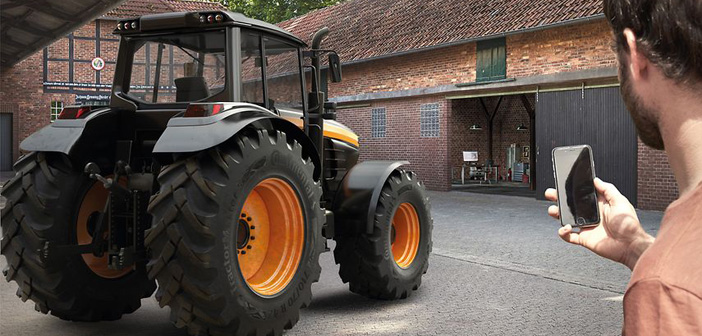Continental has unveiled hybrid agricultural tires that incorporate pressure sensors to help the operator minimize soil compaction in the field and reduce wear on the road. The tires also incorporate the proven ContiPressureCheck system for single vehicles and ContiConnect for fleets as smart solutions for the agricultural industry.
The new Continental VF TractorMaster Hybrid tires are designed to give operators the technology to efficiently adjust the pressure to correspond with the task. Developed in Lousado, Portugal, in close cooperation with other European R&D units, the very high-flexion (VF) tires feature a new and unique hybrid tread pattern that is designed to offer traction in the field and be more comfortable on the road, according to Conti.
The structure of the Continental VF TractorMaster Hybrid tire carcass is said to be more resistant than standard tires so that it can operate at lower pressures in the field and at higher speeds on the road, while carrying the same load. Underinflated tires on the road increase fuel consumption, while overinflated tires in the field lead to increased soil compaction. The hybrid tire is capable of being quickly inflated for road use and deflated for field use. When fitted to tractors with onboard air compressors, the pressure of the tire can be monitored and adjusted by the operator without needing to leave the cab.
Continental developed an integrated TPMS for the tire consisting of sensors, a yard reader station, backend management and a web portal and notification service. With ContiConnect, the data gathered by the sensors will be collected by a yard reader station as the vehicle passes by the receiver and sent to the backend, where it is analyzed and interpreted. By providing this information the fleet benefits from a reduced number of breakdowns, lower maintenance costs, and value generated by increasing the vehicle’s uptime, Conti says.
Meanwhile ContiPressureCheck operates on individual vehicles to provide the operator with real-time tire data. The technology offers a comprehensive insight into how the agricultural tires are performing. The sensor in the tire measures and communicates the pressure and the tire temperature to help the operator decide on the optimum running pressure. Measurement errors are avoided through mounting the sensors inside the tire.
Overheating on long-distance drives can be avoided by both systems constantly monitoring tire pressure and temperature. They display the tire sensor’s data on a screen in the driver’s cabin and warn before a condition becomes critical. For example, an alert can be sent if the tire temperature is over 100°C. In this way, the correct air pressure for steering the vehicle can be matched and the lifetime of the tire can be extended avoiding high financial expenditure for the farmers.



